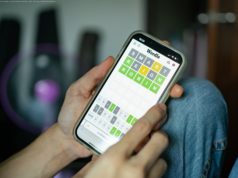Comparing the enterprise features in the Apple iPhone X with those in the Samsung Galaxy Note 8, this blogger gives the edge to the Galaxy Note 8.
Both Samsung (Galaxy Note 8) and Apple (iPhone X) have now launched their premiere smartphones, having set a new price point at about $1,000 each. Consumers may be hesitant to spend so much on a device when fully capable smartphones are available for $200 to $300 less, but enterprise users are usually less price sensitive. So, how appealing are these devices to enterprise users?
Below I compare some of the key features/specs for their appeal to enterprise-class users. Clearly it’s not always an objective decision, as many users will choose based on their preference for the iOS or Android operating systems or simply brand loyalty. But here’s my take on the features found in each.
The iPhone X and Galaxy Note 8 are similar in case size (162.5 x 74.8 x 8.6 for the Note 8 vs. 143.6 x 70.9 x 7.7 for the iPhone X) and screen (6.3 for Note 8 vs 5.8 for the iPhone X). When you hold the devices in your hand, they don’t really feel all that much different. So, it’s likely neither device really has an advantage other than both are large and have big screens, which is important to a certain class of users.
This is a critical feature, and its likely (although not yet certain) that the Galaxy Note 8 has the advantage. Apple hasn’t yet disclosed the size of the battery in the iPhone X other than saying it lasts a long time. But the Note 8 weighs about 20 grams more, and given the phones’ almost identical size, it’s likely this extra weight is due to a larger battery. Battery size is not a guarantee for how long it will last, but it’s a good indicator. In this case, with the information available, I’d give the advantage to the Note 8.
The display is a key user selection criteria. The iPhone X is Apple’s first device with an OLED screen. OLED offers much brighter and crisper displays, and Samsung has been using what it terms Super AMOLED for several generations. Since both have OLED displays, they should run close on visual appeal.
But with a slightly larger display on the Galaxy Note 8 (1440×2960 pixels vs. 1125×2436) and the fact Samsung has been using Super AMOLED displays for some time, until we can have a head-to-head comparison, I give the advantage to the Note 8 on screen appeal.
Processors are at the heart of any device when performance counts, and with such premium devices expected to perform a large variety of tasks, it’s important to evaluate them.
The iPhone X has Apple’s new A11 Bionic chip, while the Galaxy Note 8 (at least in the U. S.) incorporates Qualcomm’s highest performance Snapdragon 835. The A11 is a six-core device, while the Snapdragon 835 is an eight-core device. Cores alone don’t always determine superior performance, as optimized software and proper fine tuning can have major impacts. And Apple has been very good at tuning for highest performance. But the Snapdragon 835 has proven itself in a number of high-end designs.
In this case, until we have more performance data, I’d give Apple a slight edge based on its historic ability to optimize its overall device functionality.
Memory is one of those things users don’t often think about until they need it. Both the Galaxy Note 8 and iPhone X come with 64GB in their minimum configuration. The iPhone also comes in a 256GB configuration at $150 more. But Samsung has provided a memory card slot in its devices, while Apple has not. That means the Note 8 can be upgraded.
I give the advantage to Samsung on this one because memory upgradability, while not always on the minds of initial purchasers, is one of those things that comes back to haunt you if you can’t manage when you really do download all those 4K videos.
USB C vs. Lightning connectors is a hot debate. While this may be a minor point, it is nonetheless important, particularly in an enterprise setting. USB C is used by virtually all high-end phone makers other than Apple (at least on newer generation devices), as well as many tablets and notebooks. Its relatively easy to find chargers and peripherals (and most are interchangeable across vendors).
Of course, both devices feature wireless charging, but that’s not always available.
Importantly for enterprise users, many peripherals are becoming available for USB C. For this reason, the Galaxy Note 8 has a significant advantage for enterprise users, and I give the Note 8 the edge here.
Operating systems is one of those “religious” discussions. iOS has a very large and loyal following in the enterprise. But Android has been making significant inroads over the past couple of years, and Apple no longer commands the dominant lead it once had.
Still I have to give the iPhone X a slight edge here because it will appeal to an existing installed base that is quite loyal, particularly if they have already purchased a number of apps.
Security is a key parameter that affects enterprise users in many more ways than the average consumer. Organizations need to ensure that users can log in securely and that the company can easily determine and deploy policies to access corporate resources.
Apple claims its facial recognition software is more secure than fingerprint sensors, and it has decided that this is the primary way to log into the device. Samsung included facial recognition in the Galaxy Note 8, but it has been careful to say it doesn’t consider it foolproof and includes alternatives, such as a fingerprint sensor, iris scanner and good-old fashioned PIN capability. This is important for enterprises that may not yet be convinced of the security of Apple’s facial recognition.
Further, Samsung has included its KNOX security platform in the Note 8 (as it does in most of its devices now), which adds a significant layer of security, such as a fully encrypted segregated storage folder and hardware-level protection for prevention of rootkitting. For organizations that want the highest level of security and most device management capability, the Note 8 has more than most. While the iPhone X is not bad, I give the Note 8 a clear security advantage for enterprise use.
The Galaxy Note 8 (and S8 as well) can convert from a smartphone form factor to essentially a desktop device using its DeX capability. While not something consumers generally look for, it is appealing to a growing number of business people who want to carry just one device. Running VMware or Citrix on the device makes it compatible with most corporate apps, even when they are not ported to the device. I estimate 10 to 20 percent of users who select a Note 8 (or S8) indicate that DeX was a selection tipping point. In this case, DeX is a major competitive advantage that Apple and iPhone X currently don’t have.
For companies exploring AR/VR, the iPhone X can utilize Apple’s ARKit and offers a preliminary advantage.






